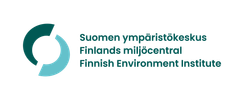The blue-green algae situation remains similar in many areas, while observations have increased in open sea areas
Warm and relatively calm weather has continued, and the number of blue-green algae observations has so far remained nearly unchanged in inland waters and along the coast. In open sea areas, observations have increased in many places. The situation is typical for midsummer but may change rapidly if weather conditions continue to favor algae growth.
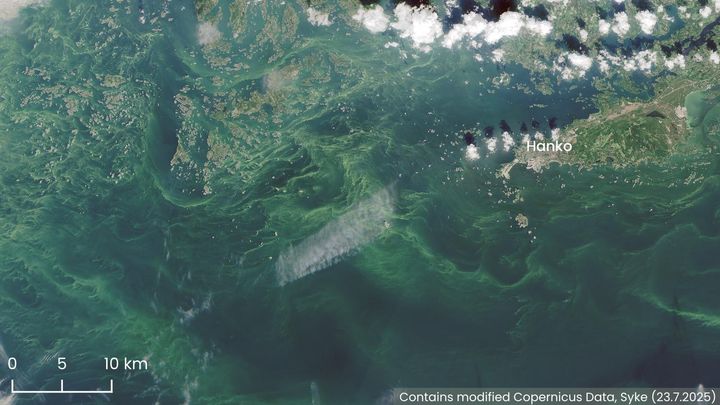
Blue-green algae barometers of the open sea areas
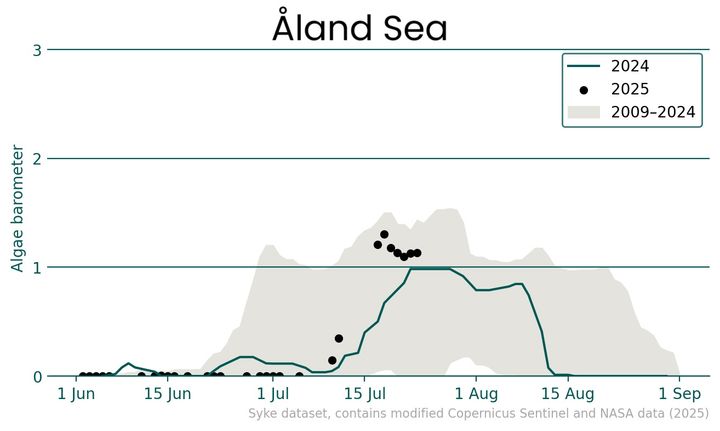

Link to the map
Map of the national blue-green algae monitoring observations on week 30
More in Finnish:
Sinilevätilanne jatkuu monin paikoin samankaltaisena, avomerialueilla havainnot ovat lisääntyneet
Syke observes the cyanobacteria occurrence as part of the monitoring of the state of the environment in Finland
The national cyanobacterial monitoring is carried out as part of the monitoring of the state of the environment in cooperation with the Centres for Economic Development, Transport and the Environment, municipal environmental and health authorities, and the Finnish Environment Institute (Syke). Finnish Rotary Clubs are also actively involved in nationwide cyanobacterial monitoring.
The cyanobacterial monitoring is based on the monitoring of cyanobacterial deposits in surface water. The intention is to provide an overview of the cyanobacterial situation in different water bodies. The monitoring includes about 400 permanent observation sites across the country on inland and coastal waters and in the archipelago.
Information on the cyanobacterial situation in the open sea areas is mainly obtained from satellite images, but also from the Finnish Border Guard, the marine research vessel Aranda, the optical device located at the Utö Atmospheric and Marine Research Station, as well as cruise and merchant ships (MS Finnmaid and MS Silja Serenade) equipped with Alg@line measuring equipment. The drift forecasts for cyanobacterial rafts in open sea areas are prepared in cooperation with the Finnish Meteorological Institute's Maritime Services.
Syke reports on the national cyanobacterial situation on a weekly basis every Thursday from 19 June to 7 August 2024. The weekly algal reporting was launched in 1998.
Several compounds produced by cyanobacteria can cause health hazards
According to the Finnish Institute for Health and Welfare (THL), cyanobacterial occurrences can cause health hazards. Cyanobacteria produce a number of different compounds that can cause symptoms. Some cyanobacteria can produce liver or nerve toxins, but most of the symptoms experienced by swimmers may also be due to other compounds.
Small children and pets should particularly be kept out of water rich with cyanobacteria. Water with cyanobacteria should not be used in a sauna or as washing or irrigation water.
If you suspect a poisoning, seek medical advice, or take the pet to a veterinarian. If necessary, the Poison Information Centre will provide additional instructions.
The municipal health authorities monitor the cyanobacterial situation on beaches.
More information about blue-green algae and health:
- At the the Finnish Institute for Health and Welfare (THL) website
- At the Poison Information Center website
This is how you identify cyanobacteria
A small amount of cyanobacteria in the water appears as green or yellowish particles. Narrow stripes of algae can drift to a beach. In calm weather, a substantial amount of cyanobacteria forms greenish or yellowish algal rafts and piles up in coastal water. In spring, yellowish pollen from coniferous trees may also be present in the water. Unlike cyanobacteria, pollen is found not only on the surface water but also, for example, on piers or yard furniture.
Cyanobacteria dissolve into tiny particles in the water if you touch the algal mass with a stick. If the algae become attached to the stick, they are something other than cyanobacteria. In a water vessel, cyanobacteria rise to the surface as tiny greenish particles within about an hour.
- Read more: How do you recognize blue-green algae?
Report your cyanobacterial observations to the Järvi-meriwiki (Lake and sea wiki)
In Järvi-meriwiki, maintained by the Finnish Environment Institute, you can establish your own observation site and share cyanobacterial observations or make individual observations when moving around waterways. You can also report observations via the smartphone-friendly Havaintolähetti website.
The reported observations are shown on the national cyanobacterial observation map, and they support the national algal situation assessment. Observations about the absence of cyanobacteria are also important.
Järvi-meriwiki is an online service produced in collaboration with authorities and citizens. The service provides basic information on all lakes larger than one hectare as well as different areas of the Baltic Sea. Users can share, for example, photos and other observations on the service.
Municipalities and cities monitor the cyanobacterial situation on the beaches, so it is advisable to report rich cyanobacterial occurrences on beaches to the health authorities of the municipality in question.
Cyanobacterial observations also in the MarineFinland.fi and Waterinfo.fi services
The cyanobacterial maps presented on the websites MarineFinland.fi and Waterinfo.fi combine the observations reported to the Järvi-meriwiki and from the beaches of the City of Helsinki, as well as the observations based on satellite interpretations made by Syke during the last three days.
Keywords
Contacts
Communications:
Vilma Rikala, firstname.lastname@syke.fi, Tel. +358 295 251 085
Inquiries about blue-green algae situationTelephone 1 pm to 3 pm
Lakes: Tel +358 50 5734 347 or +358 295 251 326
State of the Baltic Sea: Tel +358 50 5693 297 or +358 295 251 314
Satellite observations: Tel 358 50 4707 576 or +358 295 251 329, e-mail: Eotuki@syke.fi
For matters related to regional blue-green algae situations, you can contact the ELY Centres
By phone: +358 295 020 900, Mon–Fri from 9 AM to 3 PM, local/mobile rates apply
By email: ympariston.asiakaspalvelu@ely-keskus.fi
Media service at Finnish Environment Institute
Our Media Service provides information on research, helps journalists find experts for interviews and provides photos for media use.
Our Communication experts will answer your inquiries on weekdays from 9 am to 4 pm.
Images
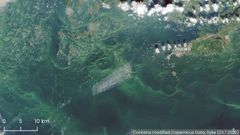
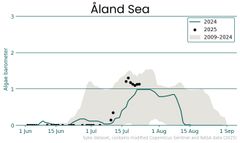
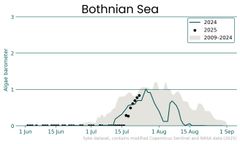
Links
Finnish Environment Institute - We build hope through research.
Finnish Environment Institute
Latokartanonkaari 11
00790 Helsinki
+358 295 251 000
It is time to move beyond solving environmental problems one by one, to systemic sustainability transformations. The Finnish Environment Institute (Syke) contributes to building a sustainable society through research, information and services. The Finnish Environment Institute is a research institute with 700 experts and researchers located in Helsinki, Oulu, Jyväskylä and Joensuu.

Subscribe to releases from Suomen ympäristökeskus
Subscribe to all the latest releases from Suomen ympäristökeskus by registering your e-mail address below. You can unsubscribe at any time.
Latest releases from Suomen ympäristökeskus
Situationen med cyanobakterier fortsätter vara liknande på många håll, medan observationerna har ökat på öppna havsområden24.7.2025 13:15:00 EEST | Pressmeddelande
Det varma och relativt lugna vädret har fortsatt, och antalet observationer av cyanobakterier har hittills förblivit nästan oförändrat i insjöar och längs kusten. Till havs har dock observationerna ökat på många håll. Situationen är typisk för högsommaren men kan snabbt förändras om väderförhållandena fortsätter att gynna tillväxten av cyanobakterier.
Sinilevätilanne jatkuu monin paikoin samankaltaisena, avomerialueilla havainnot ovat lisääntyneet24.7.2025 13:00:00 EEST | Tiedote
Lämmin ja melko tyyni sää on jatkunut, ja sinilevähavaintojen määrä on toistaiseksi pysynyt lähes ennallaan sisävesillä ja rannikolla. Avomerialueilla sinilevähavainnot ovat lisääntyneet monin paikoin. Tilanne on keskikesälle tyypillinen, mutta voi muuttua nopeasti sääolosuhteiden jatkuessa suotuisina sinilevän kasvulle.
Warm weather has increased blue-green algae observations across the country17.7.2025 13:13:00 EEST | Press release
Warm and calm weather has increased the occurrence of blue-green algae in inland waters as well as in coastal and offshore areas. Early summer rains and winds have also created favorable conditions for blue-green algae blooms. Observations have been made widely across the country, but the blue-green algae situation still remains fairly typical for mid-summer.
Det varma vädret har ökat observationerna av cyanobakterier runt om i landet17.7.2025 13:13:00 EEST | Pressmeddelande
Det varma och lugna vädret har ökat förekomsten av cyanobakterier både i insjöar samt i kust- och öppna havsområden. Även regn och vindar i början av sommaren har skapat gynnsamma förhållanden för blomning av cyanobakterier. Observationer har gjorts på många håll i landet, men situationen med cyanobakterier är fortfarande ganska typisk för högsommaren.
Lämmin sää on lisännyt sinilevähavaintoja eri puolilla maata17.7.2025 13:00:21 EEST | Tiedote
Lämmin ja tyyni sää on lisännyt sinilevien esiintymistä sekä sisävesillä että rannikko- ja avomerialueilla. Myös alkukesän sateet ja tuulet ovat luoneet suotuisat olosuhteet sinileväkukinnalle. Havaintoja on tehty laajasti eri puolilla maata, mutta sinilevätilanne jatkuu kuitenkin edelleen keskikesälle melko tyypillisellä tasolla.
In our pressroom you can read all our latest releases, find our press contacts, images, documents and other relevant information about us.
Visit our pressroom